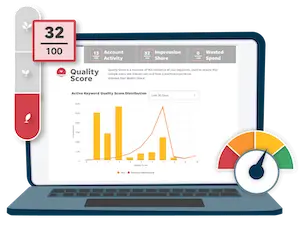NOTE: In 2015 Google announced that Search Funnels are now “Attribution” in AdWords. Learn more about attribution reports.
*
Last week Google announced a new tool for its AdWords customers to measure conversions: Search Funnels.
Search Funnels are a collection of reports that detail the Google.com search ad click and impression conduct leading up to a conversion. The reports, for example, show the number and percentage of conversions that were “assisted.” Assisted conversions result from two or more Google searches. The user conducts a keyword search, sees or clicks on a particular ad, and then abandons the ad. Then, sometime within the next 30 days, the user conducts another keyword search, sees another ad for the same company, and clicks on it. A conversion follows.
Search Funnels also show advertisers which keywords led to assisted conversions, the number and percentage of conversions that resulted from different numbers of clicks, and the amount of time it took customers to convert after seeing the ad for the first time, among other information.
What are the benefits of Google Search Funnels?
1. They give a fuller picture of how a conversion was made. Historically, Google has just supplied conversion data related to the last ad clicked before the conversion. The problem with this approach is sometimes it was an earlier ad that first sparked the customer’s interest in the particular product or service. Thus, it’s worthwhile to see which keyword searches led to that first ad, as well as subsequent ads. Sometimes, people first search for a product by using general keywords. Then, their search becomes more focused. By knowing all the keywords that contribute to conversions you can make better decisions about keyword bidding.
2. They take into account impression data. For a few years now Yahoo! Search Marketing has offered its advertisers data about assisted conversions, or “assists.” The information can be found in Yahoo! Full Analytics. Unfortunately, however, Yahoo only tracks assists resulting from clicks, not those resulting from impressions. That seems like a missed opportunity, given that many people see and pay attention to ads without clicking on them. Luckily, Google makes up for Yahoo’s lack by offering impression-driven assist tracking. Yahoo, however, tracks assisted conversion data for a longer period of time. Assists that take place within 45 days of the conversion event are recorded, whereas with Google the reporting period is just 30 days.
3. Search Funnels can help you plan seasonal campaigns. Google’s new reports show the amount of time it took customers to convert after seeing one of your ads for the first time. If you see that 90 percent of your customers converted more than a couple of weeks after first seeing one of your Valentine’s Day chocolate ads, you know they put some thought into what type of Valentine’s Day chocolate to buy. This may mean for your Easter chocolate sale you should begin your ad campaign earlier than usual. If Valentine’s Day chocolate shoppers are discerning and patient buyers, Easter chocolate shoppers may be as well. On the other hand, if most of your customers are converting within less than a day, you can deduce they are rather impulsive. This may prompt you to find new, similar products to sell, advertise, and make quick money on.
4. They can serve as a complement to view-through conversion data for display ads. Currently, Google just offers Search Funnel statistics for ads on Google.com. According to expertSEM, Google is considering including data from its search partners and content network in the near future. In the meantime, you can view assisted conversion information side by side with view-through conversion data for display ads on Google’s network. View-through conversions occur when users view an ad and neglect to click on it, but within a certain period of time go to the ad’s associated conversion page and undertake the desired action. Like assisted conversion tracking, view-through conversion tracking adds depth to conversion reporting.
5. Search Funnels are more relevant with Google remarketing. Also last week, Google unveiled a new service for AdWords advertisers called remarketing. Basically, Google remarketing lets advertisers reach users who have already visited their websites through ads on the Google Content Network. This way, if a company starts a promotion after a visitor left its site, it can advertise that deal to the same person on the other sites he or she visits. This is a way to ensure someone interested in your product or service sees one or more of your ads multiple times. This clearly fits in with Google’s new initiative to track your ads customers see or click on before converting.
6. Google search funnel data doesn’t affect quality score. According to information Search Engine Land News Editor Barry Schwartz received from Google, the search engine giant is still basing quality score on the same factors as before. For Google.com, those include click-through rate, landing page quality, and relevance of the keyword and the matched ad to the search query. This may be seen as a benefit for people who don’t want to complicate their quality score optimization efforts. However, for people who get a lot of conversions following multiple assisted clicks, this may be a negative.
Here are some other things to note about Google Search Funnels:
- Over the next few weeks the service will be rolled out gradually to all AdWords accounts in the “Conversions” section under the “Reporting” tab.
- To access Search Funnel Reports you must either have AdWords Conversion Tracking running, or import goals and transactions from Google Analytics into your AdWords account.
- Unlike Microsoft AdCenter’s search funnel tool, Google’s Search Funnel reports don’t lets users see the terms that are searched before or after a particular query.








Comments
Please read our Comment Policy before commenting.